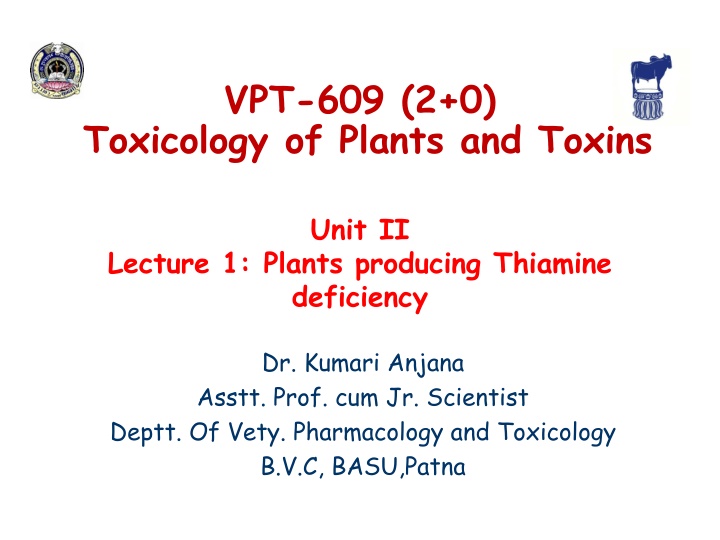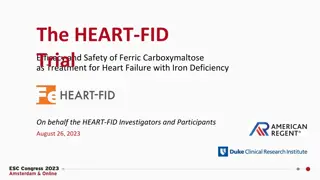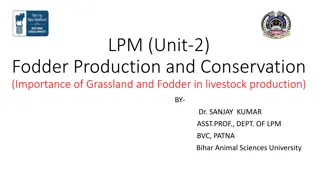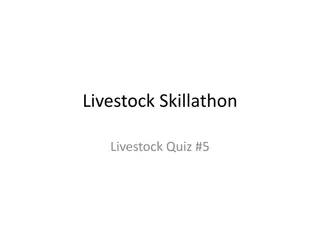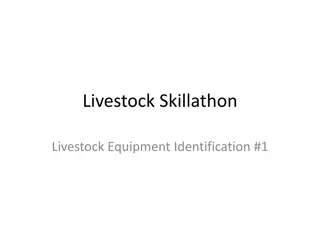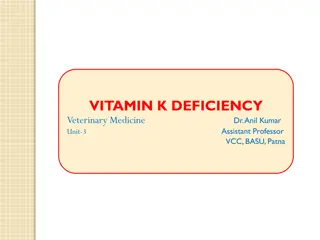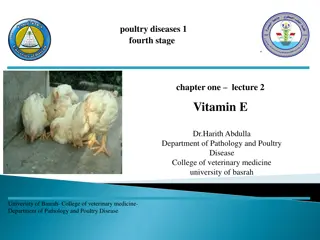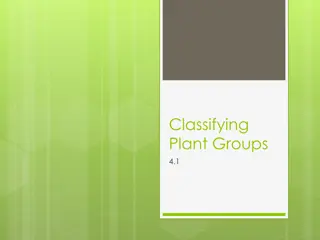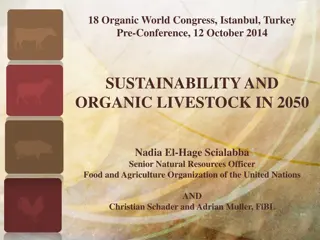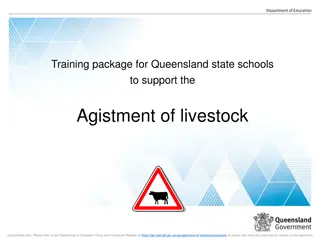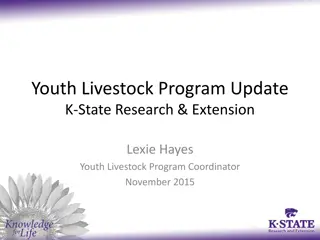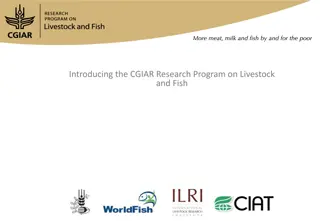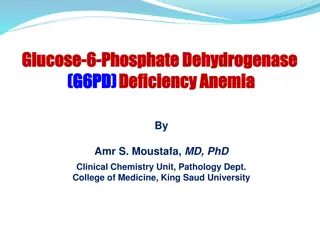Plants Producing Thiamine Deficiency in Livestock
Bracken fern poisoning in animals can result from ingesting certain plants containing the thiaminase enzyme, leading to thiamine (vitamin B1) deficiency. This deficiency can cause acute poisoning and bone marrow depletion in animals. The toxic principle in bracken fern includes thiaminase, ptaquiloside, and haematuria factor, resulting in various symptoms and health issues in nonruminants. Recognizing the signs of toxicity and providing the necessary treatment and dietary adjustments can help affected animals recover.
Download Presentation

Please find below an Image/Link to download the presentation.
The content on the website is provided AS IS for your information and personal use only. It may not be sold, licensed, or shared on other websites without obtaining consent from the author.If you encounter any issues during the download, it is possible that the publisher has removed the file from their server.
You are allowed to download the files provided on this website for personal or commercial use, subject to the condition that they are used lawfully. All files are the property of their respective owners.
The content on the website is provided AS IS for your information and personal use only. It may not be sold, licensed, or shared on other websites without obtaining consent from the author.
E N D
Presentation Transcript
VPT-609 (2+0) Toxicology of Plants and Toxins Unit II Lecture 1: Plants producing Thiamine deficiency Dr. Kumari Anjana Asstt. Prof. cum Jr. Scientist Deptt. Of Vety. Pharmacology and Toxicology B.V.C, BASU,Patna
Plants producing Thiamine deficiency
Pteridium aquilinum Bracken fern poisoning Ferns are found in the hilly tracts. The ferns are normally avoided by the grazing livestock, but ingest them during scarcity periods. The animals may develop a taste for ferns. The whole plant, including the rhizome is poisonous. Certain fern plants including Pteridium aquilinum contain thaiminase enzyme that catalyses thiamine and produces vitamin B1 deficiency in animals.
A similar thiaminase enzyme is also found in some other plants including the horsetail (Equisetum arvense), Australian nardoo fern (Marsilea drummondii) and rock fern (Cheilanthes sieberi). Ingestion of significant quantities of bracken fern produces signs of acute poisoning related to thiamine deficiency in monogastric animals and bone marrow depletion (aplastic anaemia) in ruminents.
The toxic principle in bracken fern: Thiaminase: Thiaminase is a methyl transferase that produces thiamine (vitamin nonruminants. B1) deficiency in Aplastic anaemia factor : a carcinogenic glycoside (ptaquiloside), produces bone marrow suppression and anaemia in cattle and sheep. Haematuria factor: haemorrhages is associated with this factors. Enzootic haematuria with Quercetin: Quercetin acts as a co- carcinogen .
Toxicity in Nonruminants In nonruminants, most common victims of bracken fern poisoning are horses, mules and pigs. The toxicity is mainly due to thiaminase activity thiamine (B1) thiaminase acts by splitting the vitamine to thiazole and pyrimidine). Ingestion of hay containing more than 20% bracken produces toxicity signs in about one month. deficiency (the enzyme
The symptoms are those of avitaminosis B1. Death is preceded by muscular spasms and back inflection of neck. During the onset of incoordination symptoms, blood analysis reveals leukocytosis, thrombocytopenia, increase in pyruvate levels and decrease in blood thiamine levels. Change of feed and vitamin B1 therapy help, even the severely ataxic horse to recover within 2-4 days.
Mechanism Of Action Metabolically thiamine is involved as cofactors in decarboxylation reactions. These include conversion of pyruvate to acetyl CoA and oxidation of - ketoglutaric acid to succinyl CoA in citric acid cycle. So, thiaminase deficiency results in impaired pyruvate utilisation. Therefore, pyruvic acid formed via glycolysis accumulates and the blood pyruvate level rises. The animal suffers from impaired energy metabolism and cellular shortage of ATP. The elevated pyruvate may affect central nervous system functions. Thiaminase activity is highest in rhizomes during summer. In bracken, in addition to thiaminase a thermostable antithiamine factor has been reported.
Biochemical changes are those of thiamine deficiency with hypoglycaemia during the latent period and reduced tolerance to carbohydrates. There is increase in plasma concentration of oxalic acid, phosphate and potassium and increased activity of plasma alkaline phosphatise and cholinesterase. All biochemical changes respond to treatment with vitamine B1. Pathological changes include atrophic degeneration of neurons in the cortex, caudate nucleus and corpora quadrigemina and loss of purkinje cells in the cerebellum with proliferation of glial cells and haemorrhages. There is also hepatic and myocardial degeneration.
Clinical symptoms Horse and mules - Incoordination and Staggering Muscular tremor, generalised congestion, pulmonary oedema and serosal and mucosal haemorrhages. Response to B1 therapy if started early. Pigs- Loss of appetite. Vomition and constipation Death due to damage to heart. Response to B1 therapy if started early.
Toxicity in ruminants In ruminants toxicity is not due to antithiamine action, but is due to an acute haemorrhagic syndrome thrombocytopaenia (increase in blood clotting time), depression (erythrocytopaenia and leucopaenia) and tumors in urinary bladder. of haematopoiesis The main Symptoms is a progressive failure of blood forming bone marrow tissue. A few early reports of braken poisoning in cattle could not be confirmed because of confusion of symptoms with that of the anthrax.
Normally vitamine B1 deficiency does not develop in ruminants, because Rumen microbes are able to synthesize adequate quantity of Vitamine B1. When there is very high concentration of thiaminase as in case of Marsilea drummondii (Nardoo). The exposed ruminants develop vitamine B1 deficiency and condition is called polioencephalomalacia. Nardoo is an Australian fern. Thiaminase deficiency in ruminants is charecterised by depression, incoordination, convulsions and cerebrocortical necrosis. Nardoo contains thiaminase levels upto 100 times those of bracken fern. Thiamine consumption of Nardoo are widespread in Australia. deficiency and polioencephalomalacia due to
